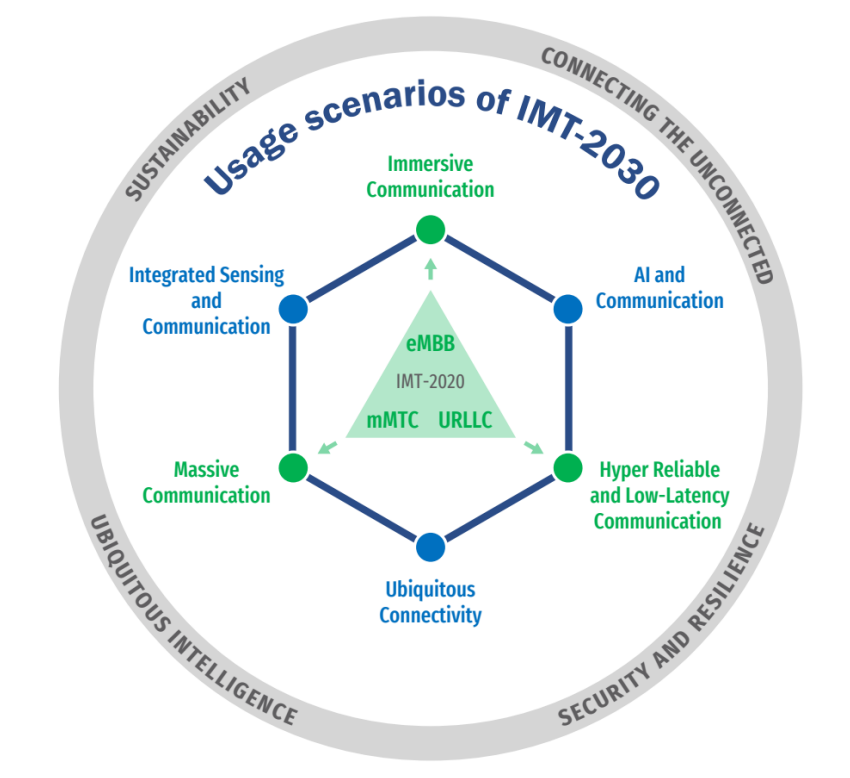Updated 6G Dossier reflects two years of progress
Since PolicyTracker last updated its 6G Dossier in 2022, significant progress has been made in framing the 6G future and setting more meaningful directional targets and milestones.
6G plans are becoming more defined across global, regional and national policy roadmaps, standards developments, spectrum targets and R&D programmes.
One strong theme is the industry’s admission that 6G must learn lessons from the 5G experience. Too many architecture options were advanced, uptake of 5G standalone was slow and 5G is still not generating much additional revenue.
There were several key 6G planning developments in late 2023, including the ITUThe International Telecommunication U… releasing its IMT-2030International Mobile Telecommunications (I… (6G) guidance framework setting initial requirements for IMT-2030. 3GPP3GPP stands for the Third Generation Partn… has committed to developing 6G standards specifications in line with the ITU framework, and at WRC-23The World Radiocommunication Conference (W…, new spectrum bands and candidate bands were identified that will be foundational for 6G.

There is broad support from the mobile industry, equipment vendors and academia for the use of spectrum in the upper mid-band ranges of 7.125—15.35/24 GHz. Refarming of spectrum below 7 GHz could also play a role in the 6G future. In the longer term, the use of sub-THz spectrum in the 90—300 GHz range is expected to provide complementary support for 6G networks, potentially in the second or later phases of 6G deployments.
At the same time, both 3GPP and the ITU are progressing agendas to identify spectrum for satellites and other non-terrestrial networksNon-terrestrial Networks (NTN) are wireles… (NTNs).
Our 6G dossier, fully updated for 2024, is now available to Spectrum Research Service Subscribers. Fittingly, it consists of six Research Notes!
